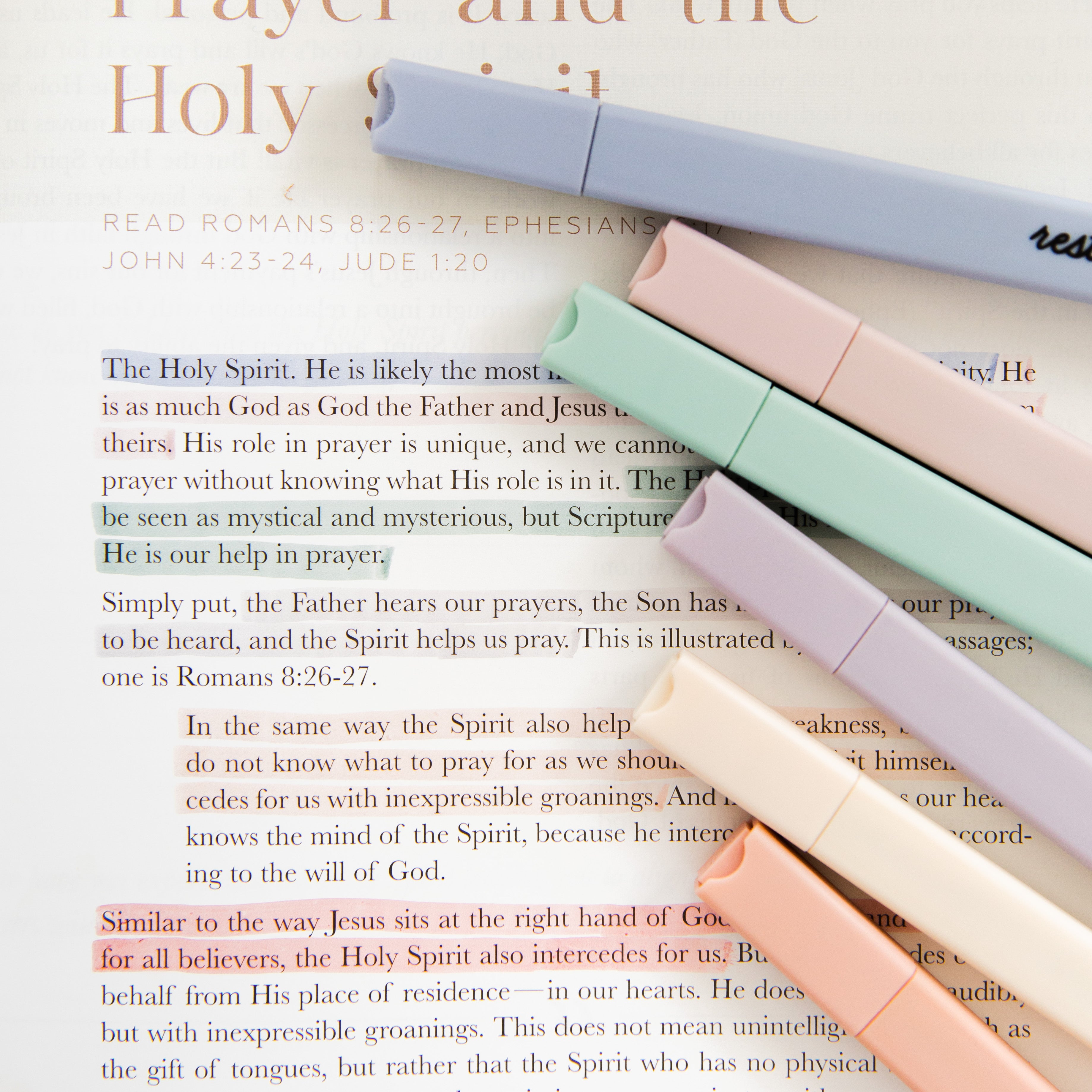I have a very fond memory of receiving my first “adult” Bible when I was a teenager. For years I had various versions of kid Bibles with fun pictures, but this new Bible was special. It felt like a rite of passage. This shiny new NIV Study Bible had silver tipped pages and a navy leather cover with my name engraved on it. It was also filled with notes, commentary, and maps. The only problem—I did not know how to use it. Yes, I knew to read the books of the Bible found within, but what was all the other stuff for? For years I used that Bible and missed out on all the important information found in the notes and commentary. But I also fell into a trap of thinking that the New International Version (NIV) was the only translation worth reading. I am so thankful for those that showed me the joy of using multiple translations and what they actually mean.
Choosing a Bible translation is important for believers because it is the very Word of God. The author of Hebrews 4:12 explains the priceless value of the Bible when he writes, “For the word of God is living and effective and sharper than any double-edged sword, penetrating as far as the separation of soul and spirit, joints and marrow. It is able to judge the thoughts and intentions of the heart.” Jesus affirms the power of the Word as He prays on our behalf to the Father in John 17:17 when He prays, “sanctify them by the truth; your word is truth.” And the Apostle Paul teaches us the importance of the Word in our lives as he tells Timothy in 2 Timothy 3:16–17, “All Scripture is inspired by God and is profitable for teaching, for rebuking, for correcting, for training in righteousness, so that the man of God may be complete, equipped for every good work.” The Bible equips us to know our Savior and live for Him.

Types of Translations
So how do we decide between an English Standard Version Bible (ESV), Christian Standard Bible (CSB), or our grandmother's King James Version Bible (KJV)? What is the difference? There are two categories listed below to help you discern which Bible translation might be best for you. The first category lists the major versions that are translated directly from Hebrew, Greek, or Aramaic text. Whether translated word-for-word or thought-for-thought, scholars translated these versions from Hebrew and Greek texts. These versions are trustworthy for your everyday study of the Bible.
The second category includes translations that are considered paraphrases. These versions tell readers what a scholar thinks a passage means as opposed to translating from Hebrew and Greek texts. These versions are not bad, but should not be your sole translation. They are considered commentary, and their application is derived from a scholar, not the inspired Word of God. Paraphrase versions are best used as a companion to one of the major translations.
This list is by no means exhaustive, but it shares the translations most widely used and reliable in word and thought translation of the original text. One of the best ways to choose a translation is to pick a version that has a study Bible. Study Bibles are filled with helpful tools as you study the Word. Many of us skip those first few pages at the beginning of each book of the Bible, but let me encourage you to read them. These pages provide valuable information about the author, date the book was written, the original audience, genre, and visual aids like maps, diagrams, and charts. Study Bible tools provide the lens by which we can view the book of the Bible we are studying and gain a deeper understanding of the text.
Another tool you can use is a comparison of translations. As you study a passage, read it in multiple translations to enhance your understanding of the text. In this way, Scripture helps you interpret Scripture. There are several online Bibles that allow you to view translations side by side as you study. These will be listed below as well. One other tool you can utilize in a Study Bible is the cross-references found in the center column or bottom section of each page. These references will point to other passages in Scripture that discuss the same or similar topic, thus growing your understanding without ever leaving the pages of your Bible.

I still have that navy leather NIV Study Bible on my shelf. And I enjoy picking it up to compare with other translations. But what I have learned over the years is that it is a gift to have so many English translations of the Bible. Each one enables believers to grow in the Word when used correctly. Take time to choose a Study Bible that works best for your everyday study of Scripture, but don’t hesitate to use other translations to grow in your knowledge of the Word as well. No matter what, be in the Bible, the Words of our Lord are life!

Major Bible Translations
Editor’s Note: In this article, we use the phrases “word-for-word” and “thought-for-thought” to describe translations. These are common phrases to describe whether the translation focuses on translating the Hebrew, Koine Greek, and Aramaic words into corresponding English words or on conveying the overall meaning of the passage. That said, the phrases are admittedly a little misleading. This is because no translation is a true “word-for-word” translation, at times they all translate based on the intended meaning. There are too many differences in syntax, vocabulary, and verb systems to create an actual word-for-word translation that would be understandable to English readers.
Christian Standard Bible (CSB) - This translation combines both word-for-word and thought-for-thought translations from Hebrew and Greek texts. It is appropriate for middle school age reading level (around the age of 12, for people living outside the US). The Christian Standard Bible is a significant revision of the Holman Christian Standard Bible. Publisher: Holman Publishing and B&H Publishing
English Standard Version (ESV) - The ESV follows a word-for-word translation of the Hebrew and Greek text. It is appropriate for middle school age reading level (around the age of 12, for people living outside the US). It is a revision of the Revised Standard Version. Publisher: Crossway
King James Version (KJV) - First published in 1611, the KJV is the most popular version to date. It is a word-for-word translation from the Hebrew, Greek, and Aramaic text. The old English used makes this translation an Upper High School/Secondary School reading age level. Publisher: Various
New King James Version (NKJV) - This revised and updated version of the KJV is a word-for-word translation. The spelling and language has been updated over time to more modern day English. It is considered an upper elementary/primary school or early middle school reading level. Publisher: HarperCollins
New American Standard Bible (NASB) - The NASB is considered the most exact word-for-word translation of the Hebrew and Greek text. It is an upper High School/Secondary School reading age level. Publisher: The Lockman Foundation
New International Version (NIV) - The NIV combines both word-for-word and thought-for-thought translation from the Hebrew and Greek text. However, it does lean more toward thought-for-thought. It is appropriate for middle school age reading level (around the age of 12, for people living outside the US). Publisher: Zondervan
New Living Translation (NLT) - The goal of this translation was to create a thought-for-thought translation using everyday English. This version is the most readable version without being a paraphrase. This is appropriate for upper elementary/primary school reading level. Publisher: Tyndale
Paraphrase Bibles
The Living Bible (TLB) - This version is an interpretation or commentary on the already translated English Scriptures. It does not use word-for-word or thought-for-thought from the Hebrew and Greek text. It is best used as a companion to word-for-word or thought-for-thought translations. This version’s commentary nature can help explain passages in simple English and enhance your study of a more literal translation. The TLB is appropriate for elementary/primary school reading level. Publisher: Tyndale
The Message (MSG) - This version is a paraphrase by Eugene Peterson. It is best used as a companion to word-for-word or thought-for-thought translations. This version’s commentary nature can help explain passages in simple English and enhance your study of more literal translations. The Message is appropriate for elementary/primary School reading level. Publisher: NavPress
The Amplified Bible (AMP) - This version uses multiple English word equivalents within a verse to translate a passage. Not all words are valid for the meaning of the passage. This version is largely considered a paraphrase or commentary-based translation. Best used with other more literal translations. This is appropriate for upper elementary/primary school reading level. Publisher: The Lockman Foundation/Zondervan
Works Cited:
https://www.biblegateway.com/blog/2016/06/bible-translation-reading-levels/
Additional resources on Bible translations and available Bibles at The Daily Grace Co. ®:










